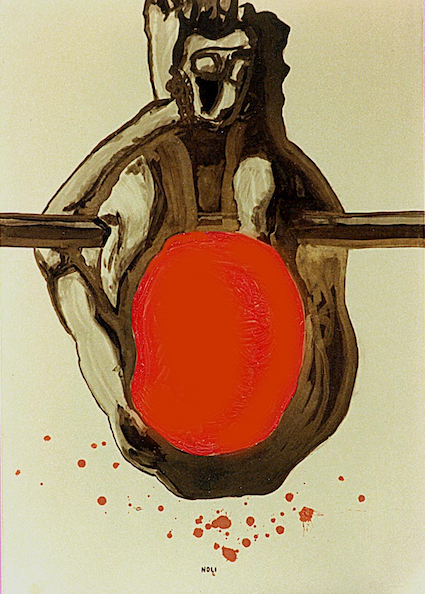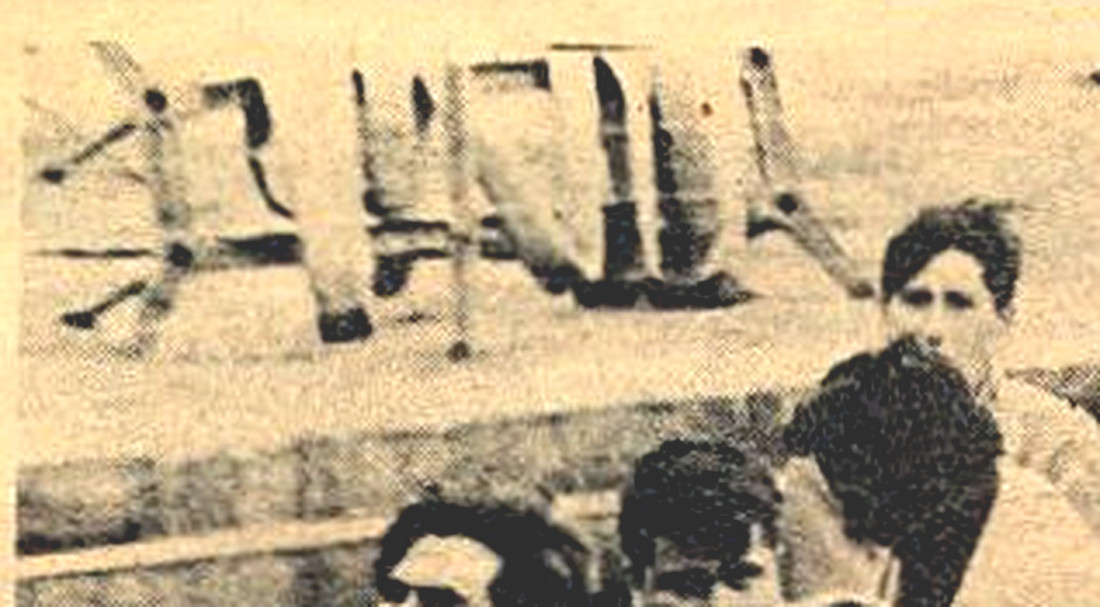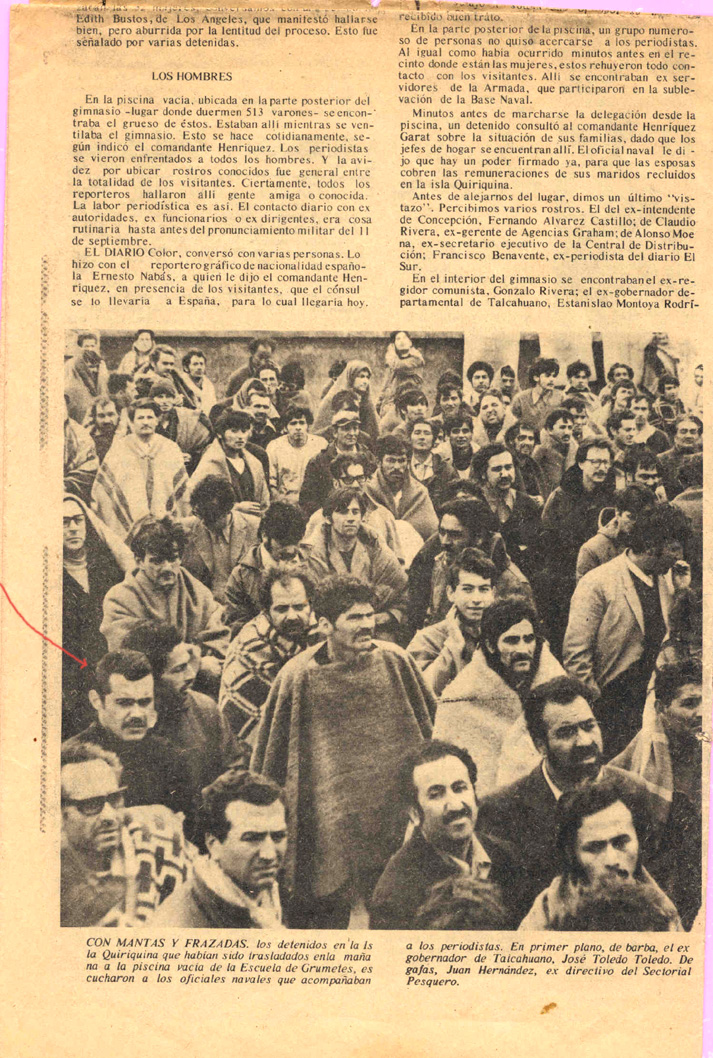In commemoration of the 50th anniversary of the Chilean coup d’état – A pictorial homage to my fellow prisoners tortured and executed.. Followed by my own testimony.
By Prof Marcello Ferrada de Noli
[Cover image: Pau de arara, a “torture technique” also used in Chile at the times of the military dictatorship]
I will start by transcribing a message published in the site Memoria Viva. It contains a testimony of a young sailor cadet (grumete, in Spanish), then a guard behind the wires of the building where the male prisoners were kept.
“Testimonials – “A seamen cadet from that time –who prefers to remain anonymous– was an eyewitness to the events in Quiriquina. He stated:”
“…The Navy’s seamen cadet school, located on Quiriquina Island, became a detention and torture centre. On the same day, September 11, 1973, at approximately 2:00 p.m., the first ship arrived with approximately 200 detainees. At the end of November 1973 there were at least 1,200 detainees, including approx. 40 women.
In that place of torture, Fernando Álvarez Castillo, then Concepción’s Province Head, was killed by the application of electricity; the body was taken to Concepción and the media published that he had died in one of the police precincts in Concepción.
Torture was systematically applied to professors at the University of Concepción, to executives of the Huachipato Power Plant, and detainees were brought from Tomé, since the Navy was in charge of this town and also Talcahuano.I know that at least 3 people were shot, young men whose bodies were thrown into the sea. In November 73, a group of approx. 100 prisoners began the construction of a prison among the ravines that face the Tumbes Peninsula [Fort Rondizzoni].One duty I had was to take the personal data of the detainees, and later I became a member of the armed guards that guarded the prisoners. It was an experience that I have not been able to forget, I was 20 years old.
Amidst my inexperience, and deeply touched by the suffering I saw, there were occasions when I took correspondence to the home of a doctor who lived in the centre of Concepción. Later I learned that he has gone to Italy, in exile.”
Here i the photo below, the two prisoners that the young grumete was refering to, namely Fernando Álvarez (circle), and me (marked by the arrow):
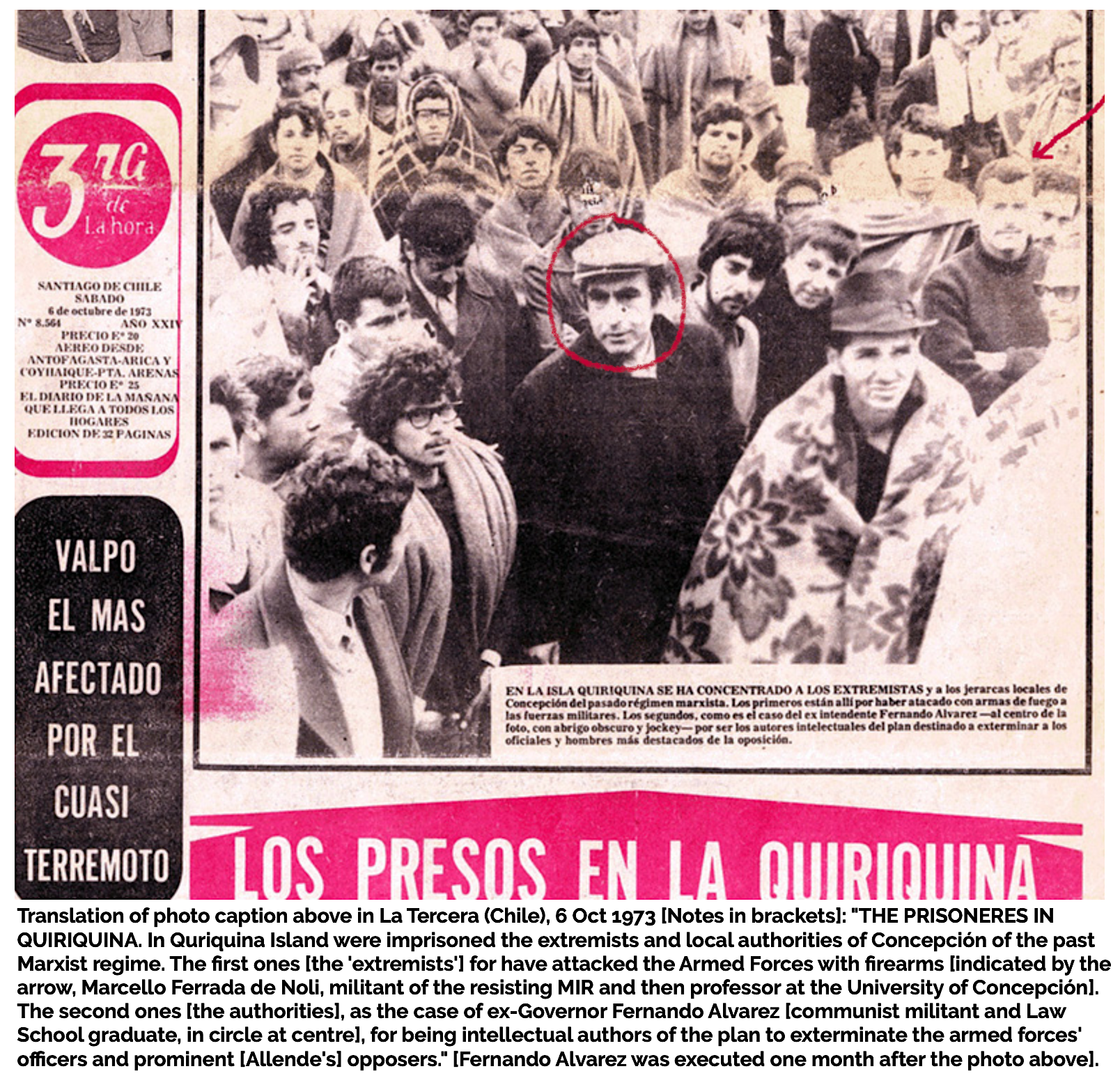
That young guard, author of the testimony above, not only kept –albeit spodaric– my epistolary contact with my parents. He was also the one my father asked the dangerous favor of delivering to me –smuggling wise– some basic painting tools. A few oil colours, a little aquarelle set, pencils and brushes that eventualy I managed to paint under my captivity at the island [see samples further below]. Besides, to the best of my knowledge, no other among the few prisoners from Concepción (because the vast mayority were from Talcahuano and Tomé), “lived in the in the centre of Concepción” –as the young cadet mentioned in his testimony. At those times my family residence was two blocks away the Plaza de Armas –in an area also witnessing the sporadic resistance we had fought, before the written comunicado we received from a courier from la central –office run by the Regional leadership of MIR– which ordered “repliegue” (withdrawal). [See Personal testimony by a revolutionary professor on the military coup in Chile – By Prof Anders Romelsjö].
I. Photos of the Quiriquina prisoners camp 1973-1975
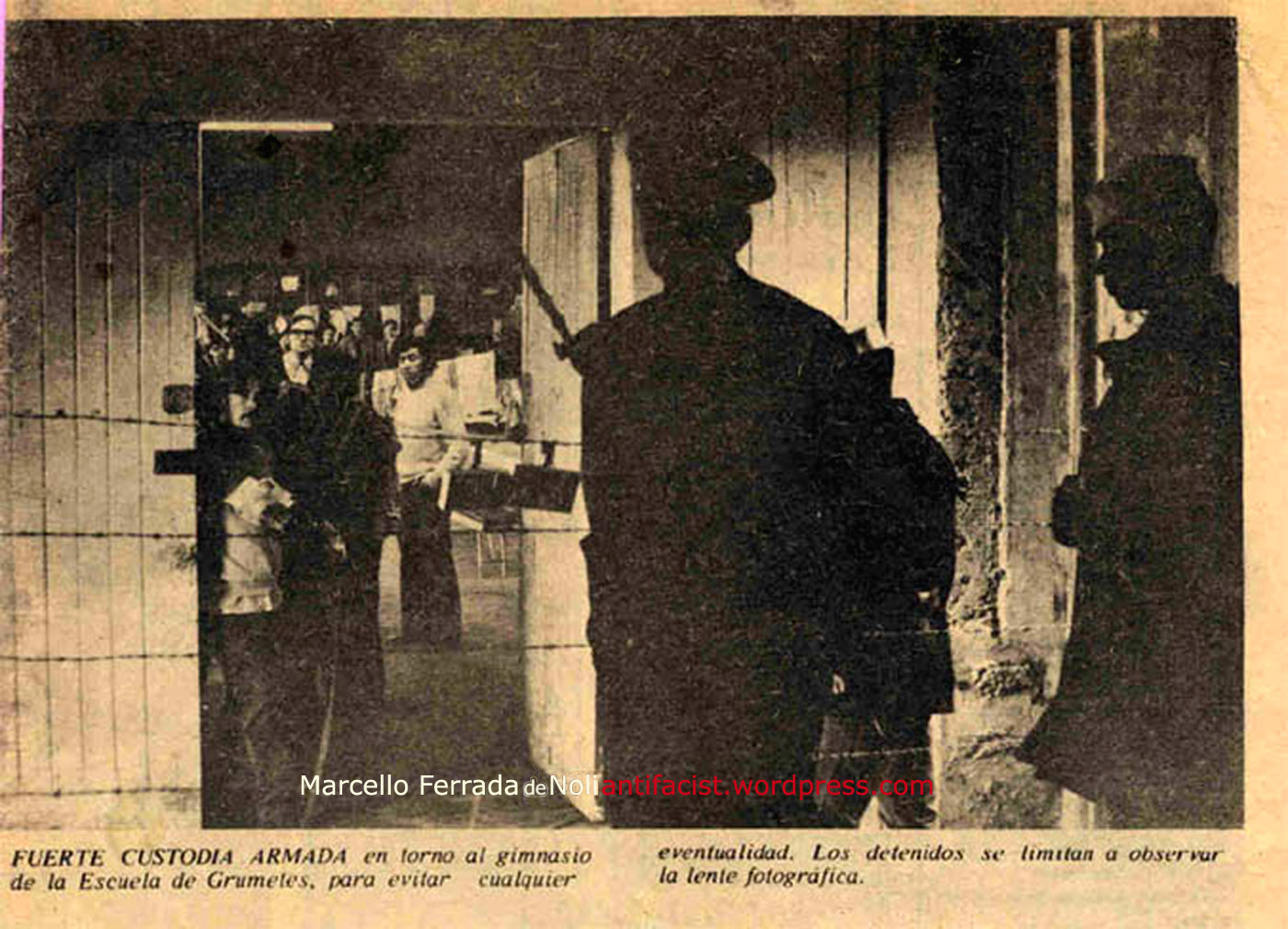
Surrounded by barbed wire, the compund where the prisoners were confined
Horizontal lines seen up in the photo are barbed wire outside the emty pool where trisoners were confined some hours day-time
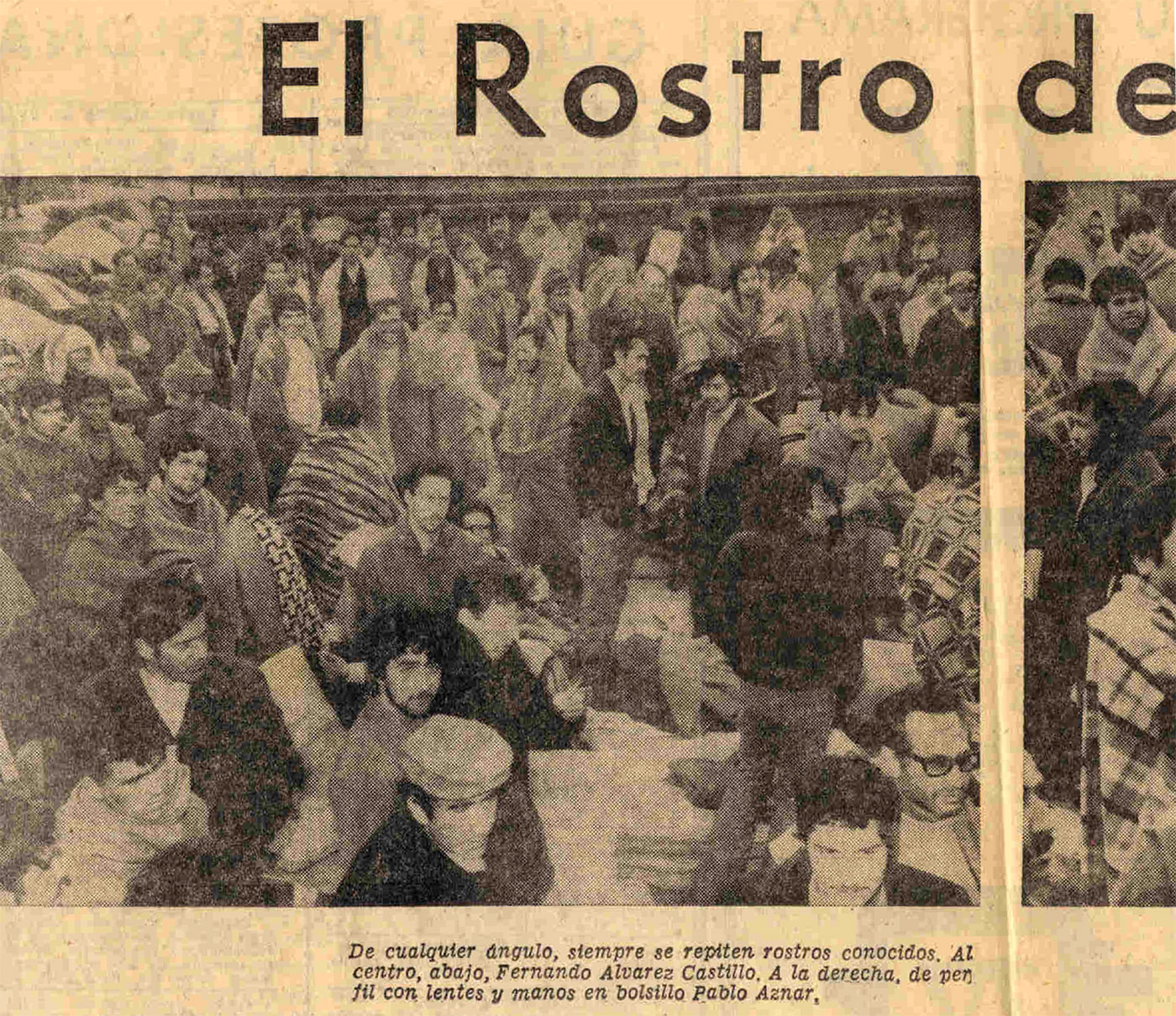
Fernando Álvarez Castillo, then Concepción’s Province Head (Intendente de Concepciòn), down at the photo foregound. He was killed under torture one month after this picture was taken.
At left in the photo, marked by the red arrow, prisoner Marcello Ferrada de Noli
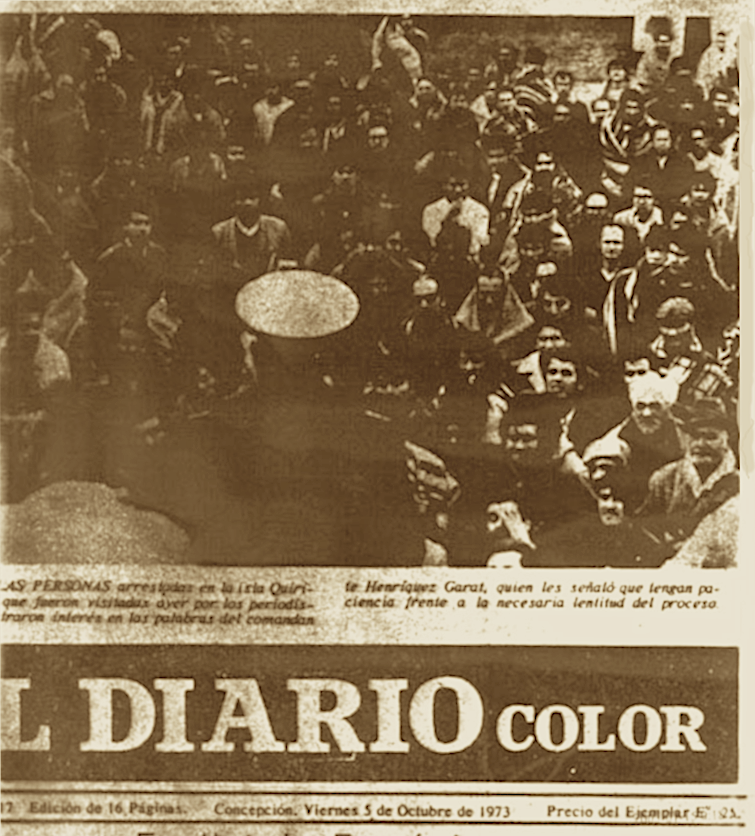
The prisoneres’ camp commander sddresses the prisoneres in front of the journalists. In the caption of the photo he is saying, “Do have patience”
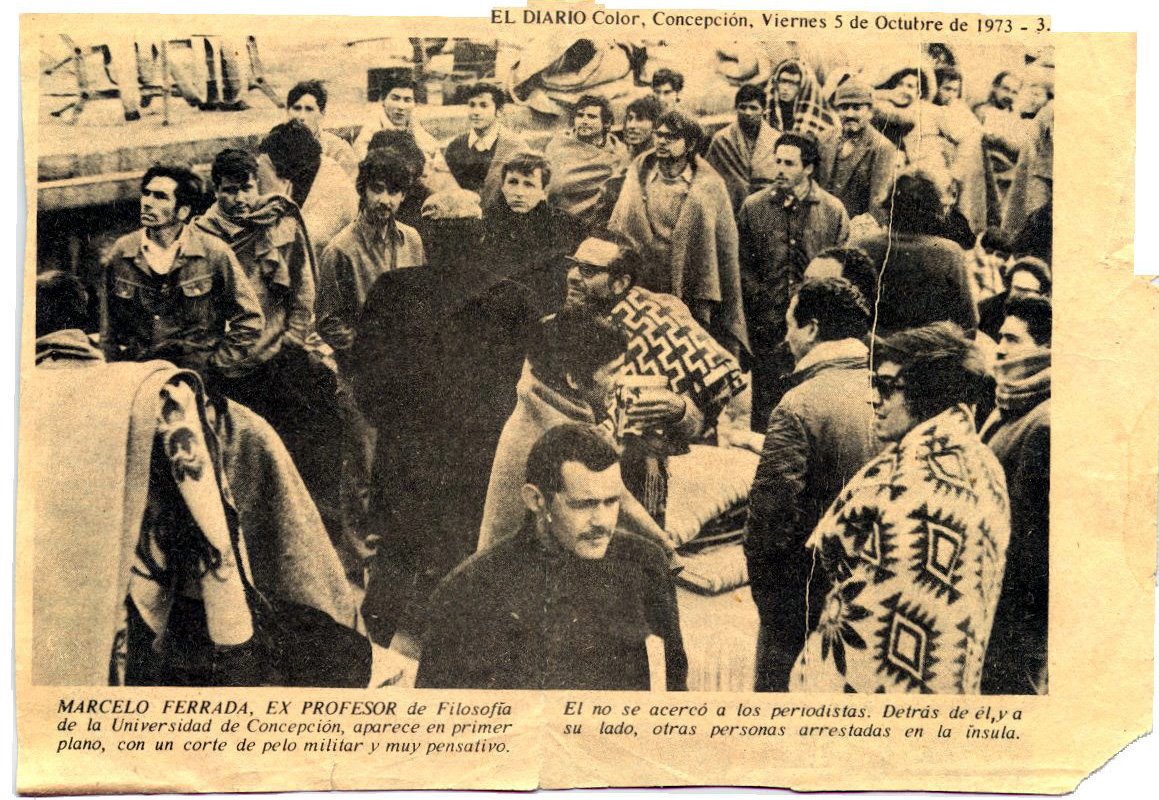
Me, at the picture’s foreground. The photo caption says, “he did not aproach the journalists”. Others did. At that time I was profesor de filosofía (Universidad de Concepción). Later in exile formed as doctor of medicine.
II. My artwork done at the Quiriquina prisoners camp, or referred to my comrades of that fighting
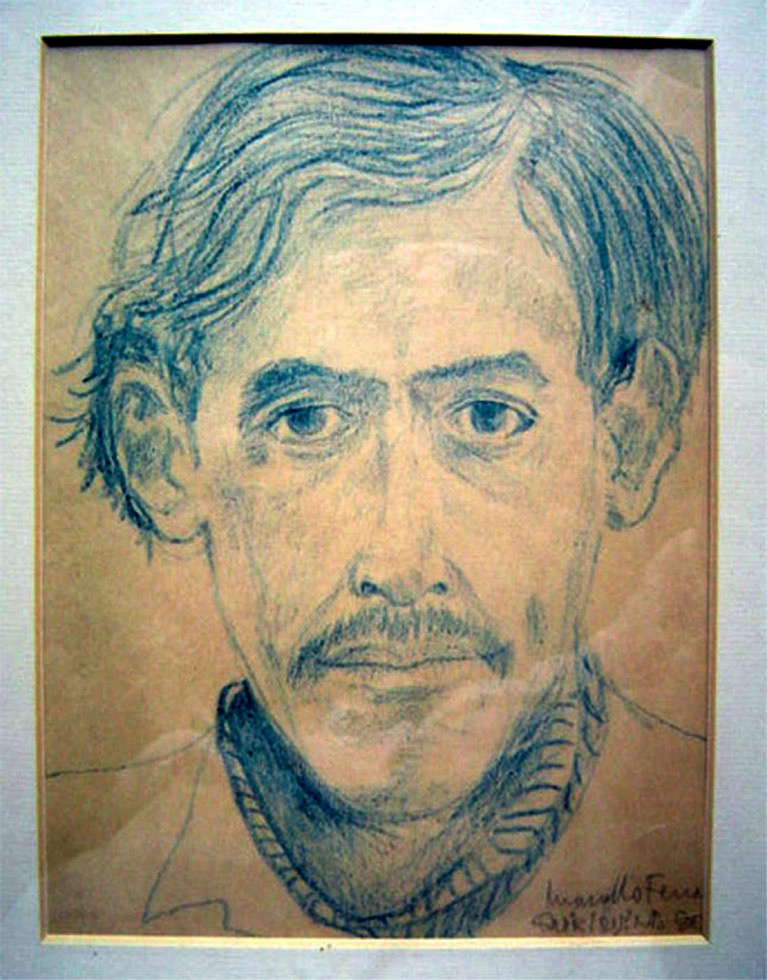
Portrait of Dr Armando Popa at Quiriquina prisoners camp
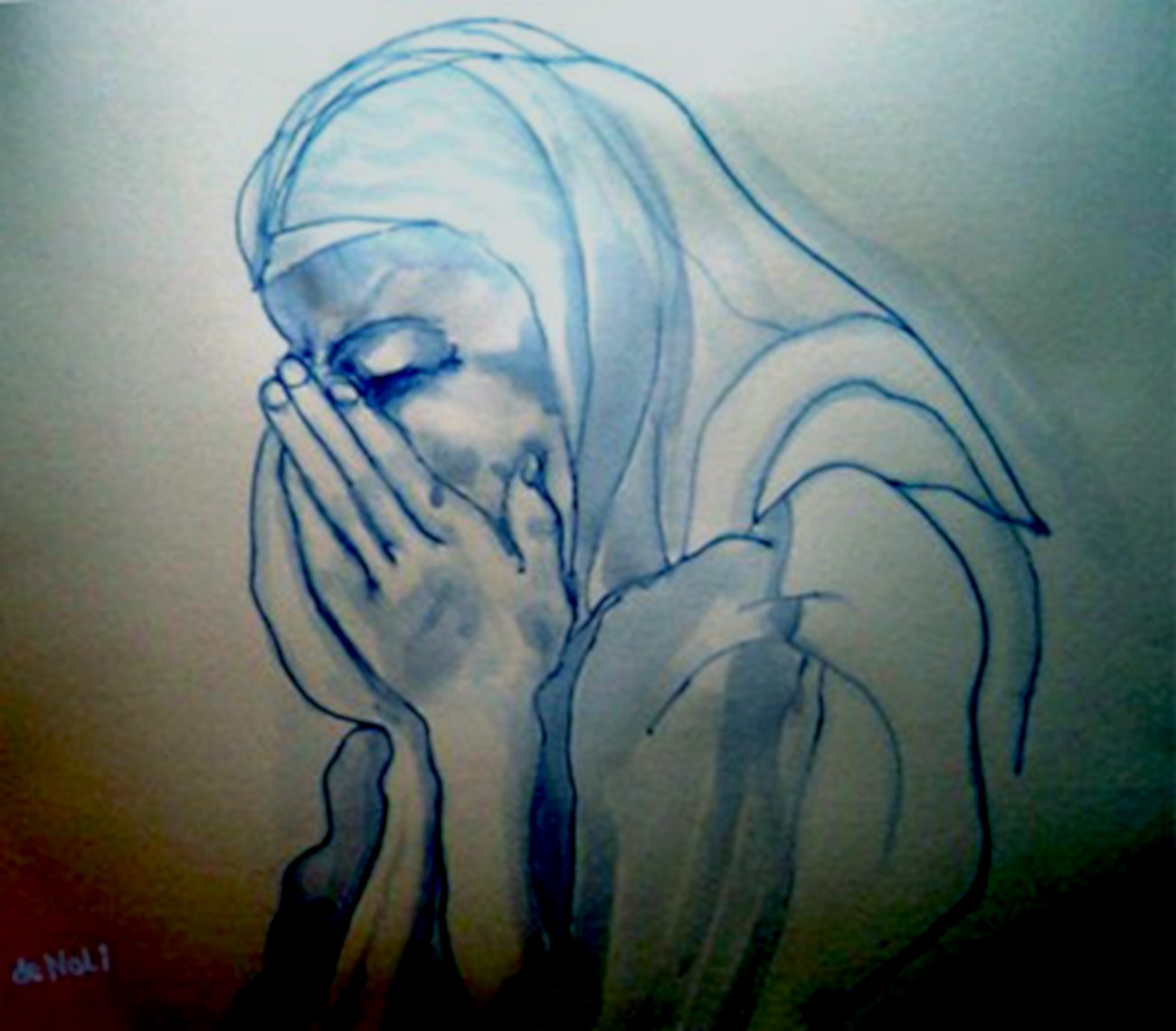
The mourning
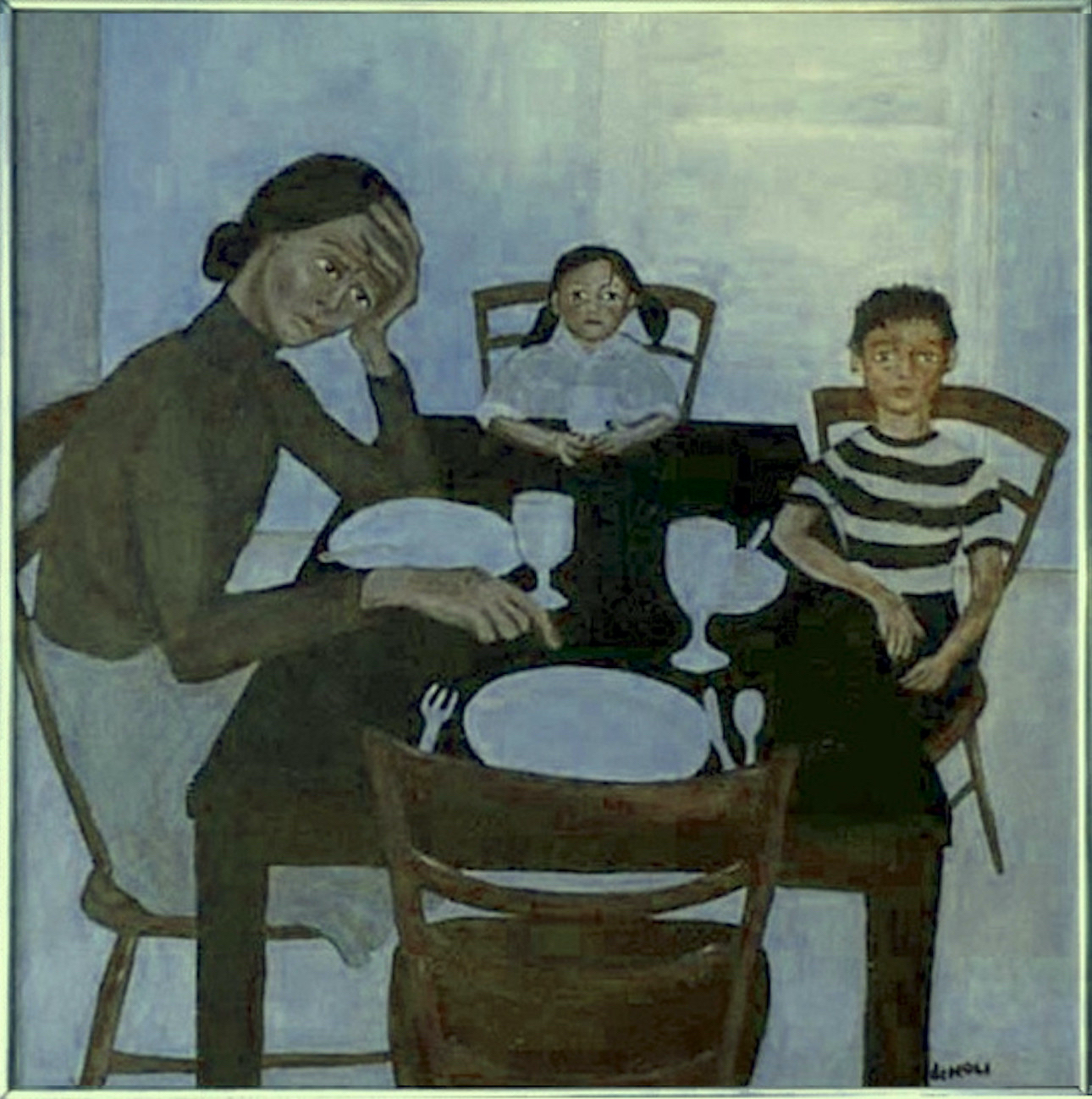
The waiting for the return of the prisoner
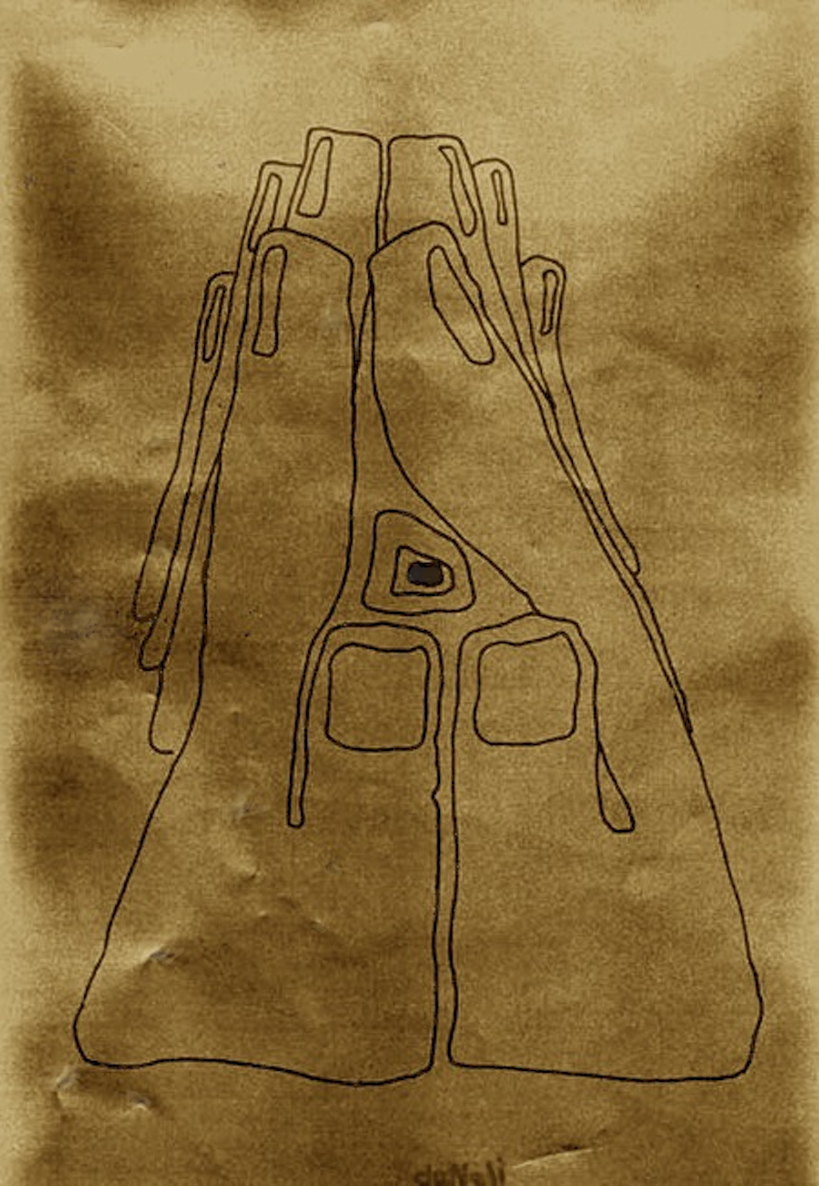
The prisoners pray at Quiriquina Island
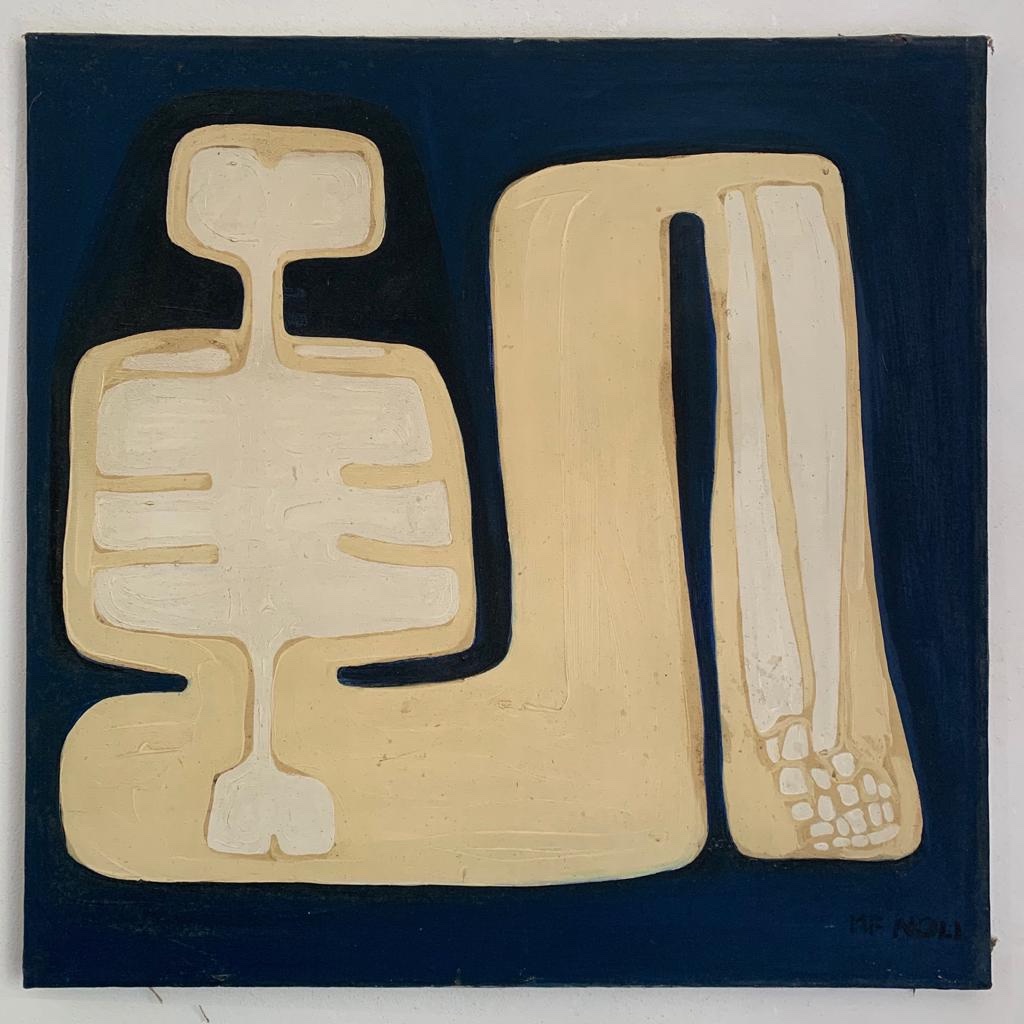
The dissapeared – Where are they?
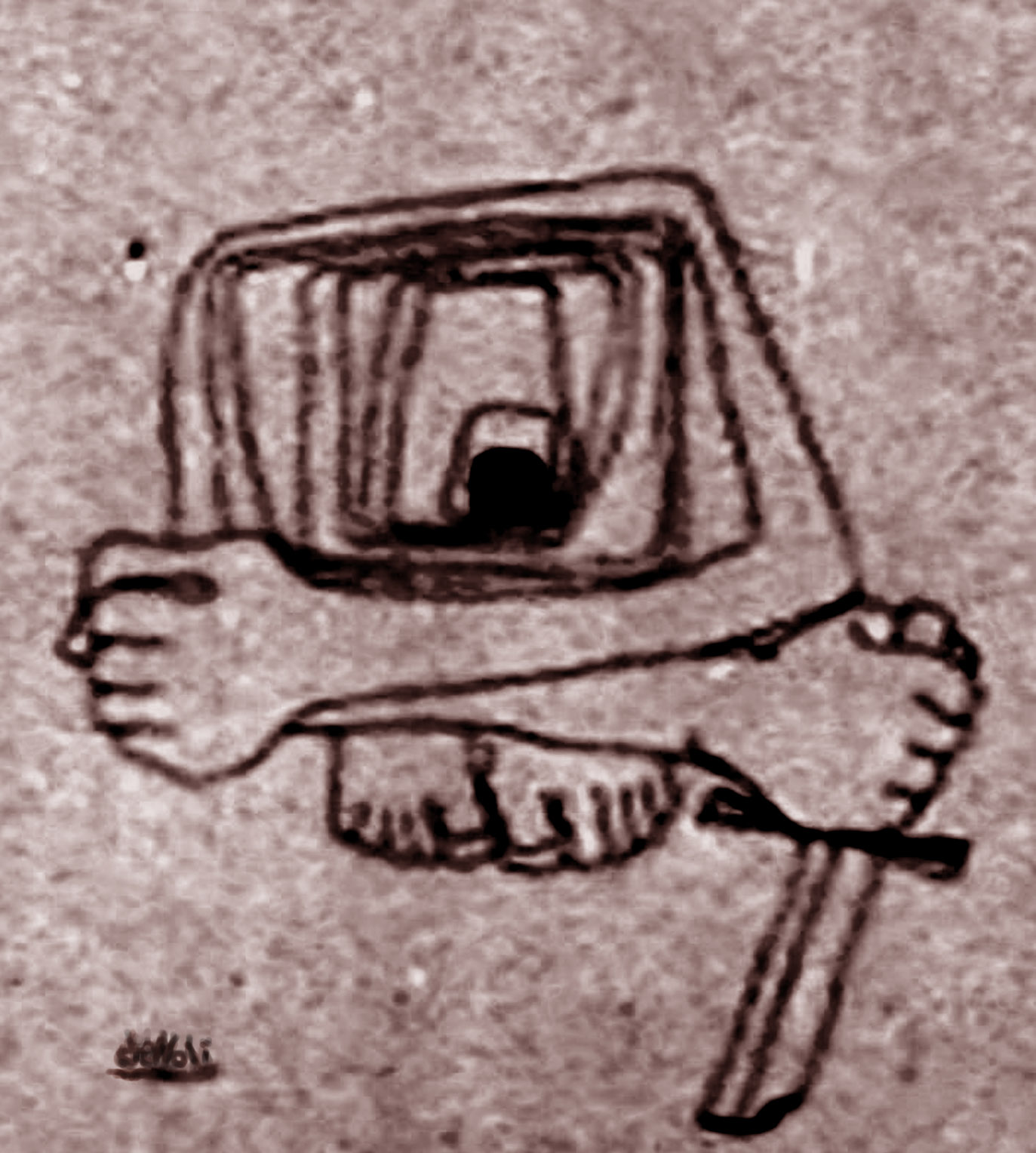
MIR resistance, downed but not yet defeated
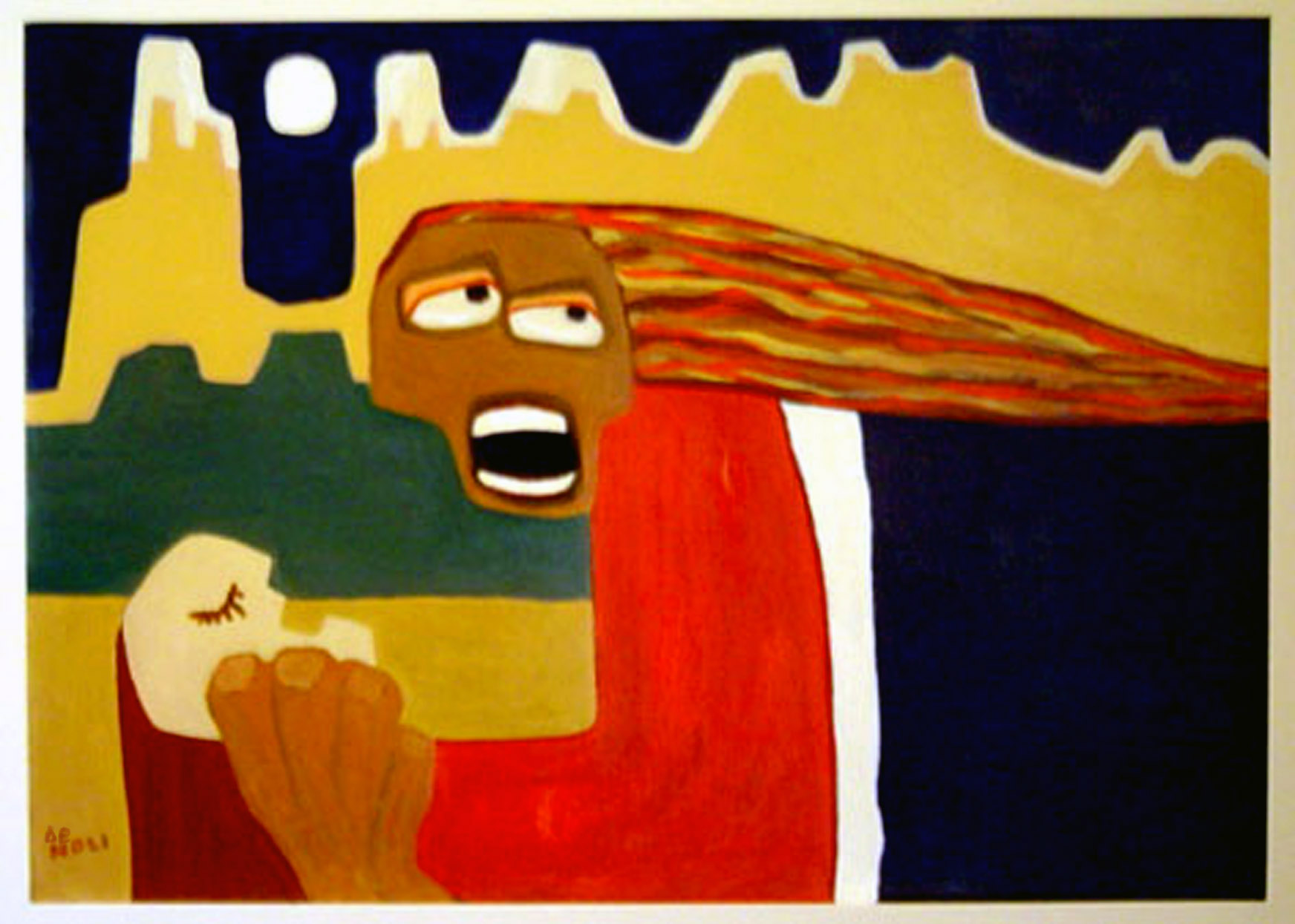
The hunt of 1973
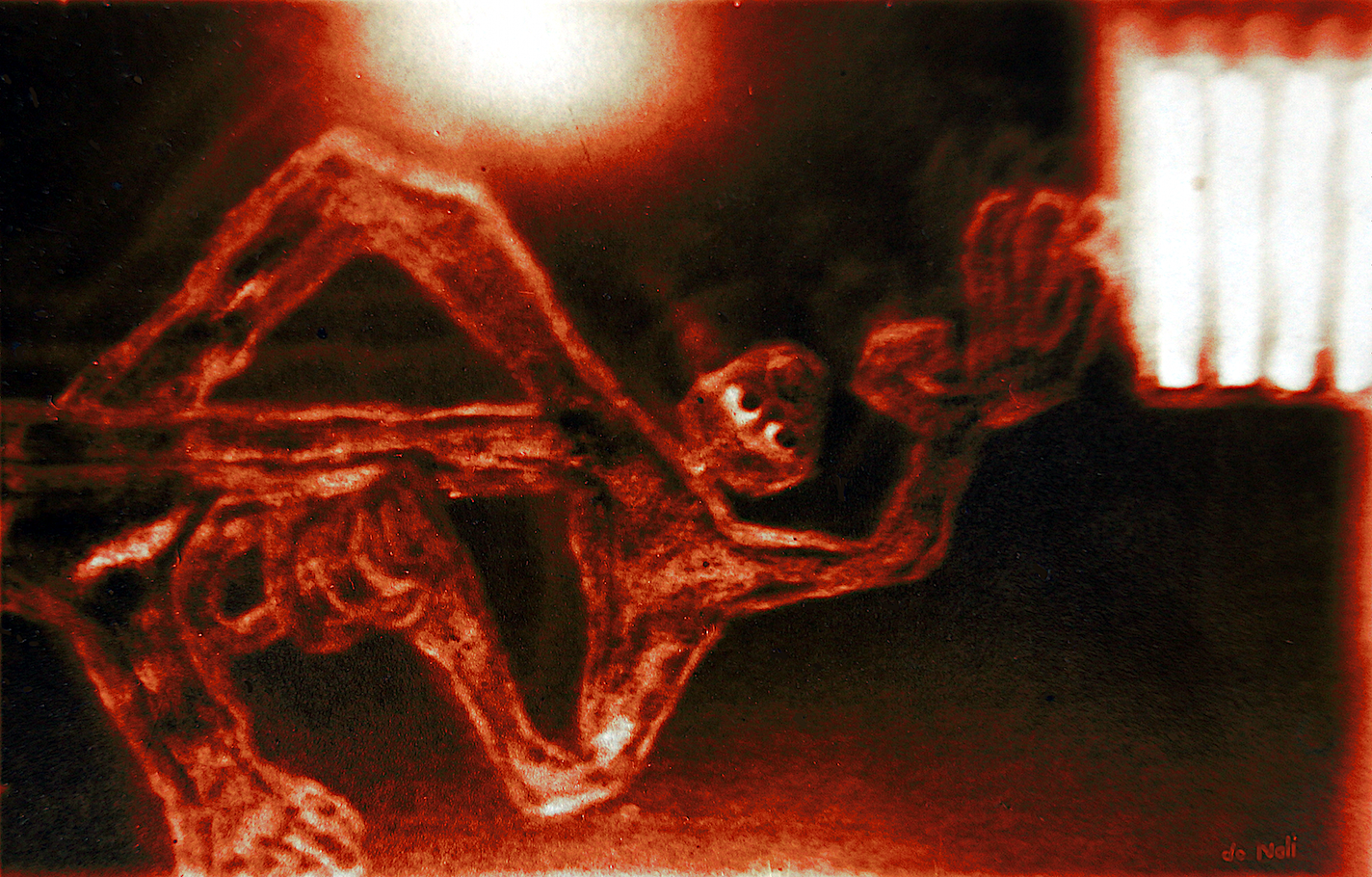
Prisoner’s escape to nowhere
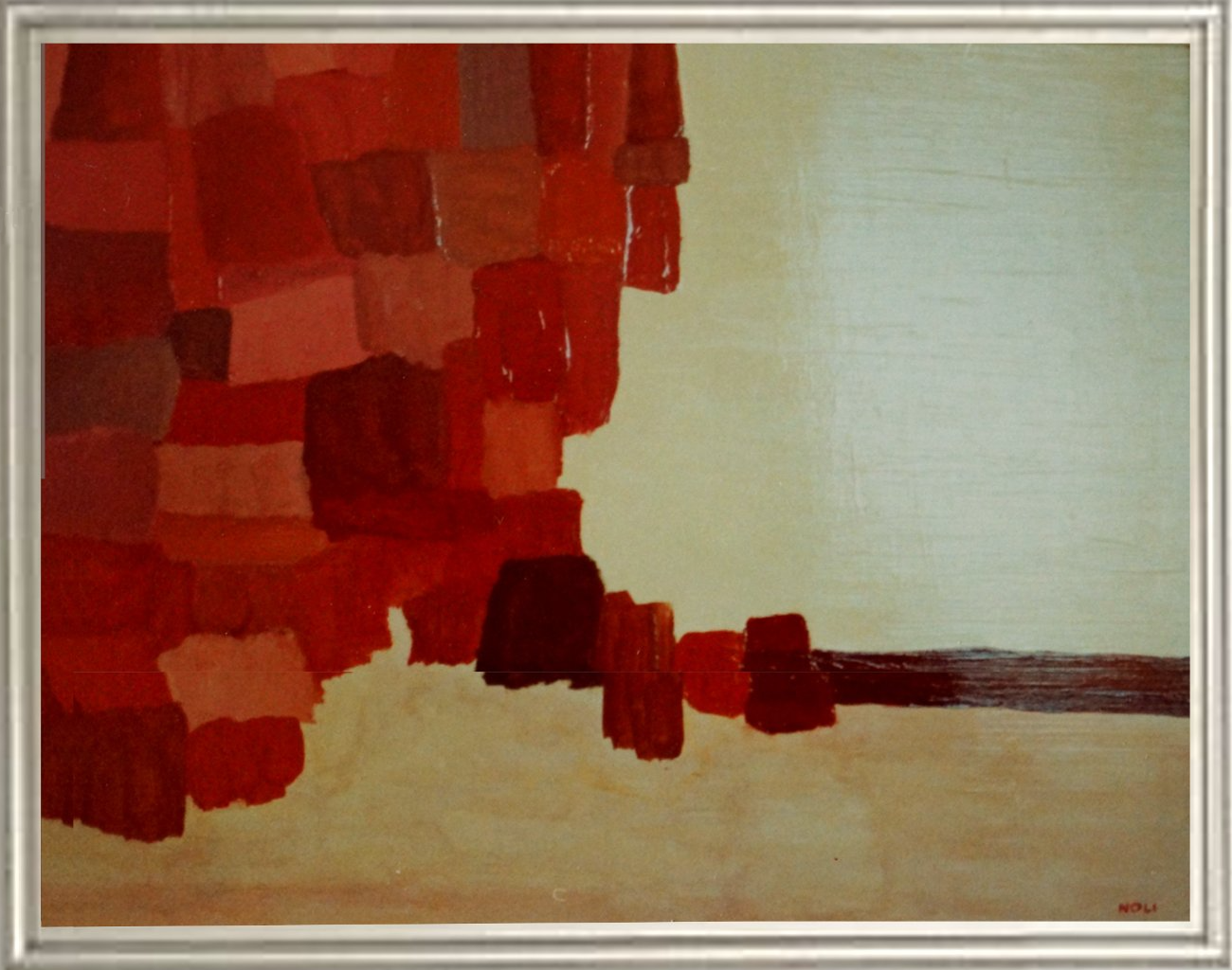
Prisoners in line to enter the torture chamber
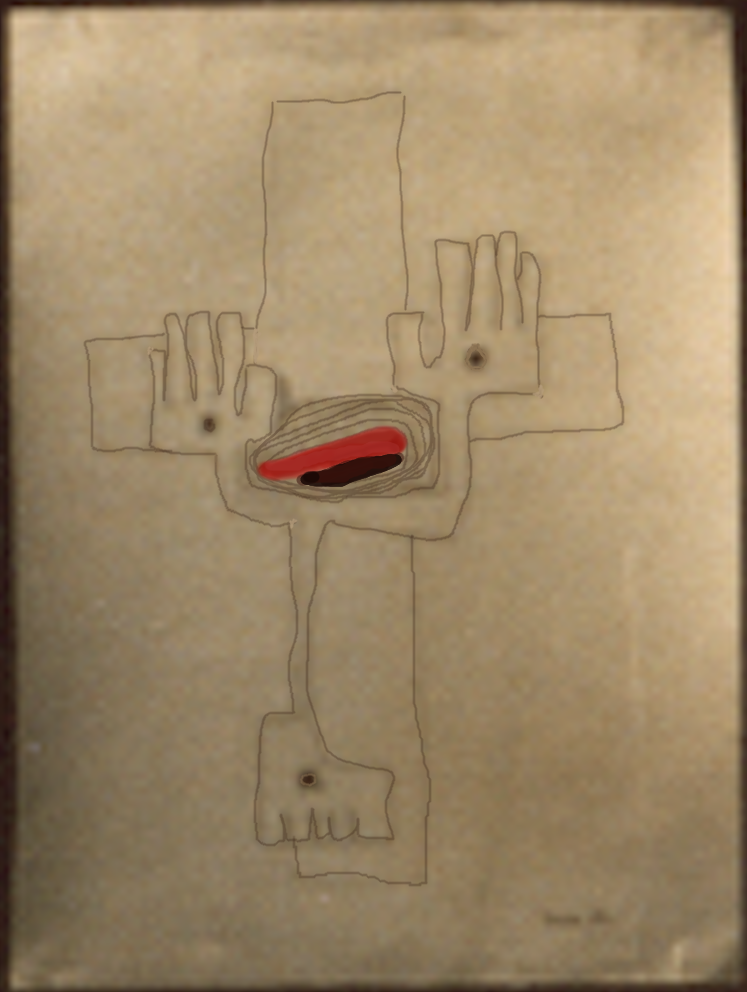
The prey of the prisoner at Quiriquina Island
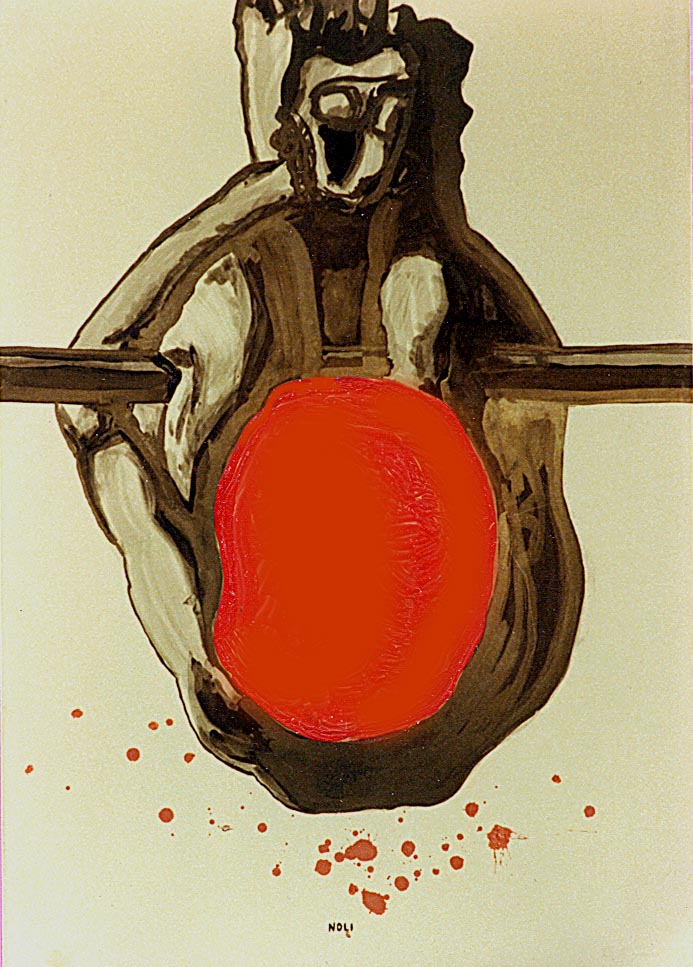
The torture
III. This also happened in the Quiriquina Island. My testimony
(It is in Spanish and Italian, soon in these days appears the English version)
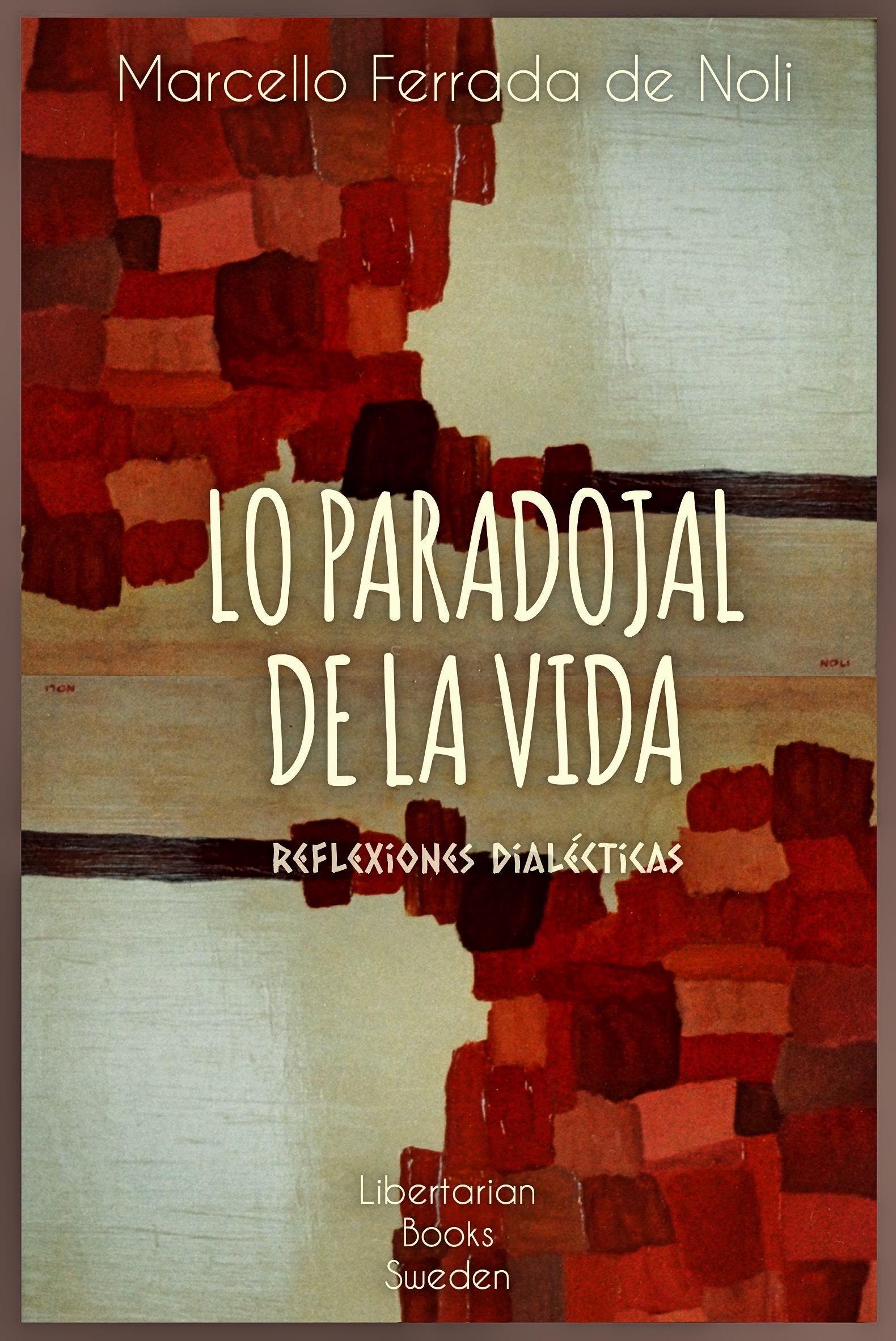
Spanish: Read chapter “Vida de prisioneros, rutina de sorpresas”, pages 45–58. Link:
https://libertarianbooks.eu/2021/02/25/lo-paradojal-de-la-vida/
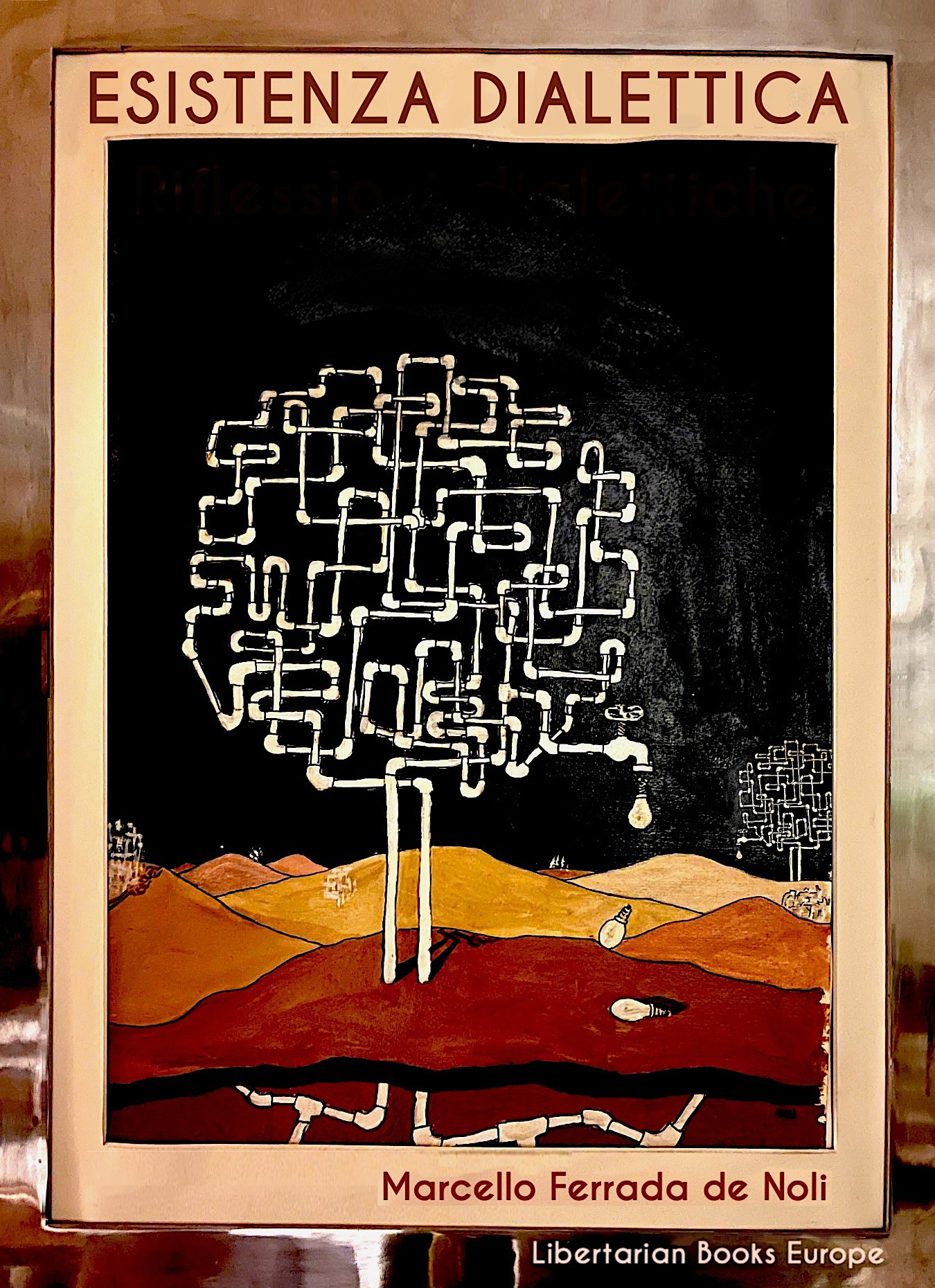
Italian:
Esistenza Dialettica
Leggi e scarica questo libro qui
Legggi “Vita da prigionieri, routine di sorprese”, pag 45
This book in English, also has chapter dedicated to the events of September 11 in Concepción, the following experiences in Quiriquina Island, and the fight agaisnt Pinochet during my exile in Europe:
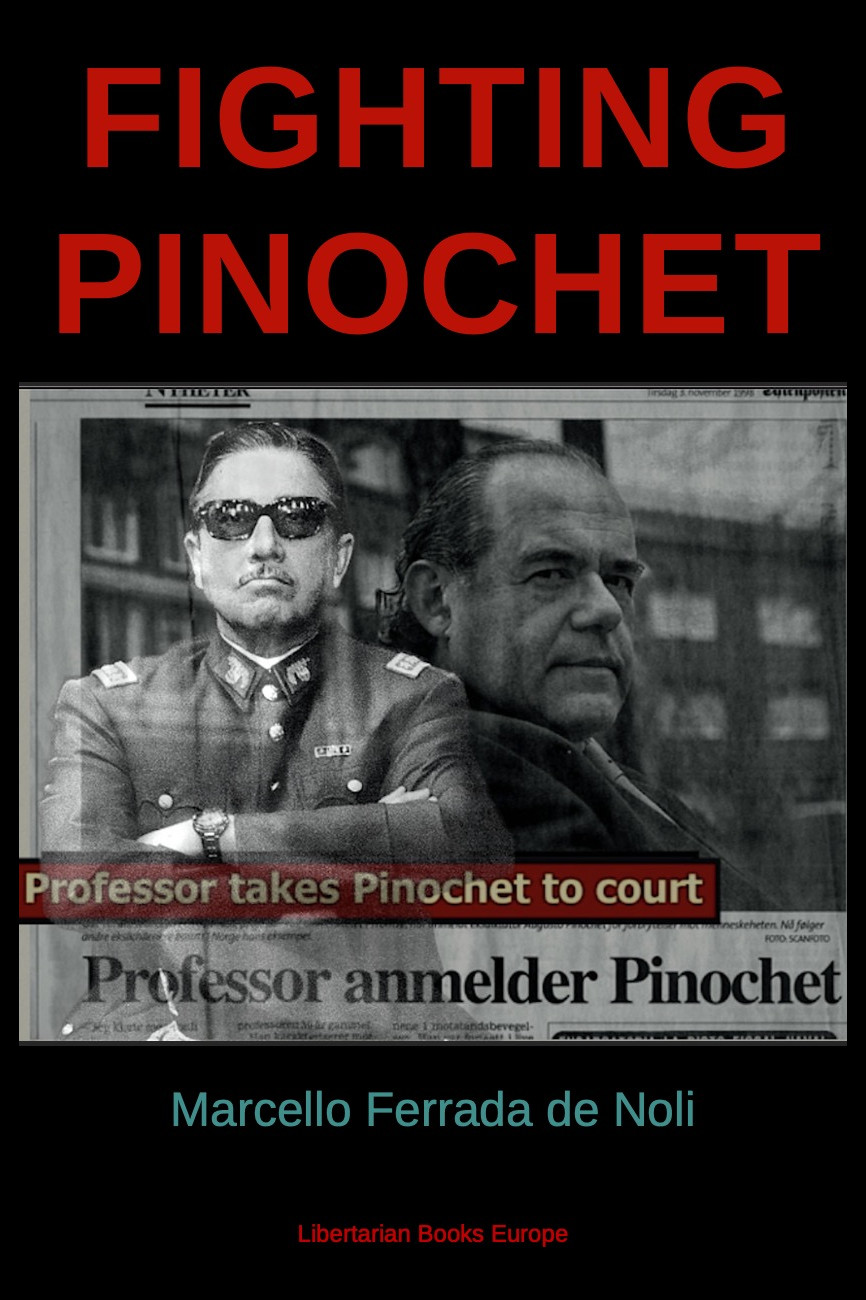
You can read/download this book here:
https://libertarianbooks.eu/2021/05/20/fighting-pinochet/
